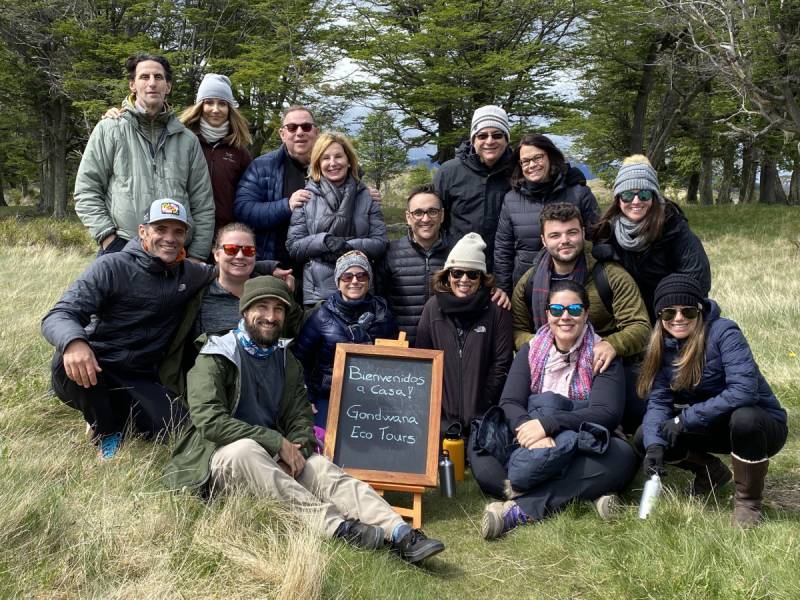As you travel through Louisiana, prepare to be transported into what feels like another country. The unique language, culture, cuisine, and wildlife intertwine to create an environment that is unlike anywhere else in the United States. Visitors who are exploring Louisiana can feel this, particularly in New Orleans and Cajun Country.
This article will explore what makes Louisiana so unique and why you should consider visiting.
Exploring Louisiana’s Culture
Louisiana has one of the most colorful histories and cultures in the United States and has been multicultural for centuries. Over time, the region was first inhabited by Native Americans, later colonized by France, and settled by Spanish and Caribbean people. As well as this, the area was inhabited by enslaved people who were brought over against their will. The region was sold by Napoleon’s France to America under the Louisiana Purchase in 1803. As such, Louisiana’s culture has a range of communities, including Cajun and Creole, that greatly influence the food, language, and music of the state.
The Mississippi Delta region was formed over centuries by silt deposited by the Mississippi River. Native Americans have inhabited this resource-rich land for over 1300 years. One of the original names for the New Orleans area was ‘Bulbancha’, which translates to “place of many tongues” in Choctaw. This name is still fitting for a place with such a rich diversity of cultures. People traveled there to hunt, fish, seek refuge, and trade.
In the 17th century, French explorers arrived and claimed the land as part of “New France.” They named Louisiana in honor of King Louis XIV of France. The French ruling period was followed by Spanish control before transitioning back to French. The United States acquired the territory from the French First Republic in 1803, which is known as the Louisiana Purchase.
The Spanish, French, African, and Native American influences are still visible in every conceivable way. The farther you venture off the beaten path, the more Louisiana starts to look and feel like a whole other country.
Cajun Country
While Cajun Country only covers around 30 percent of the state, its traditions are found everywhere. The origins of Cajun Country are from Acadiana, a 22-parish region settled in the mid-18th century by exiles from present-day Nova Scotia. From 1764 to around 1785, around 3,000 Acadians arrived in South Louisiana and made it their home. Now, more than 250 years later, their creolized name, Cajun—, derived from the French Acadien— is widely used.
The early Cajuns held dance parties in their rural homes. Young children were told to “go to sleep”, which in French is “fais-do-do”. This phrase caught on, and fais-do-do was used to refer to a Cajun dance party, reflecting the lively spirit of Cajun culture that persists today.
Other important parts of Cajun culture include the vernaculars of Louisiana French and Cajun English, the unique cuisine, and the rich musical landscape including the uptempo, syncopated style of Zydeco.
New Orleans
The region’s multilingual and multicultural traditions persist today and are particularly evident in New Orleans. The settlement was founded by French settlers in 1718 and named “La Nouvelle-Orléans” for Philippe II, Duke of Orléans, who was the Regent of France at the time.
The deep cultural roots of Louisiana are maintained and celebrated, especially in New Orleans. New Orleans’ unique, rich heritage includes traditions like street parades and an array of community festivals and social rituals. To this day, New Orleans remains a major destination for live music, sporting events, and annual Mardi Gras celebrations.
Louisiana’s Music and Festivals
New Orleans is the birthplace of jazz, a music style with strong rhythms and a reputation for improvisation. Brass bands and piano players helped to create this new sound.
After World War II came the rise of “Louisiana blues”, a style of blues music born out of that era. It is often split into two sub-genres, the jazz-influenced “New Orleans blues” and the slower tempo “swamp blues”, influenced by Cajun music.
Louisiana is known for festivals and gatherings that celebrate its musical heritage. These include the New Orleans Jazz & Heritage Festival, Bayou Country Superfest, and, of course, the most famous of them all; Mardi Gras.
Mardi Gras
Mardi Gras (or “Fat Tuesday” in French) is a celebration of the beginning of Lent. The Carnival season begins on January 6th each year, called ‘King’s Day’ or the ‘Feast of the Epiphany’. Mardi Gras Day falls on a different date each year, as it is relative to Easter Sunday, but it is always the day before Ash Wednesday.
In New Orleans, the Carnival season is known for citywide revelry and elaborate parades. The main event is the Rex Parade, which occurs on Mardi Gras Day. Beads of gold, green, and purple are distributed, and king cake is eaten as part of the celebration.
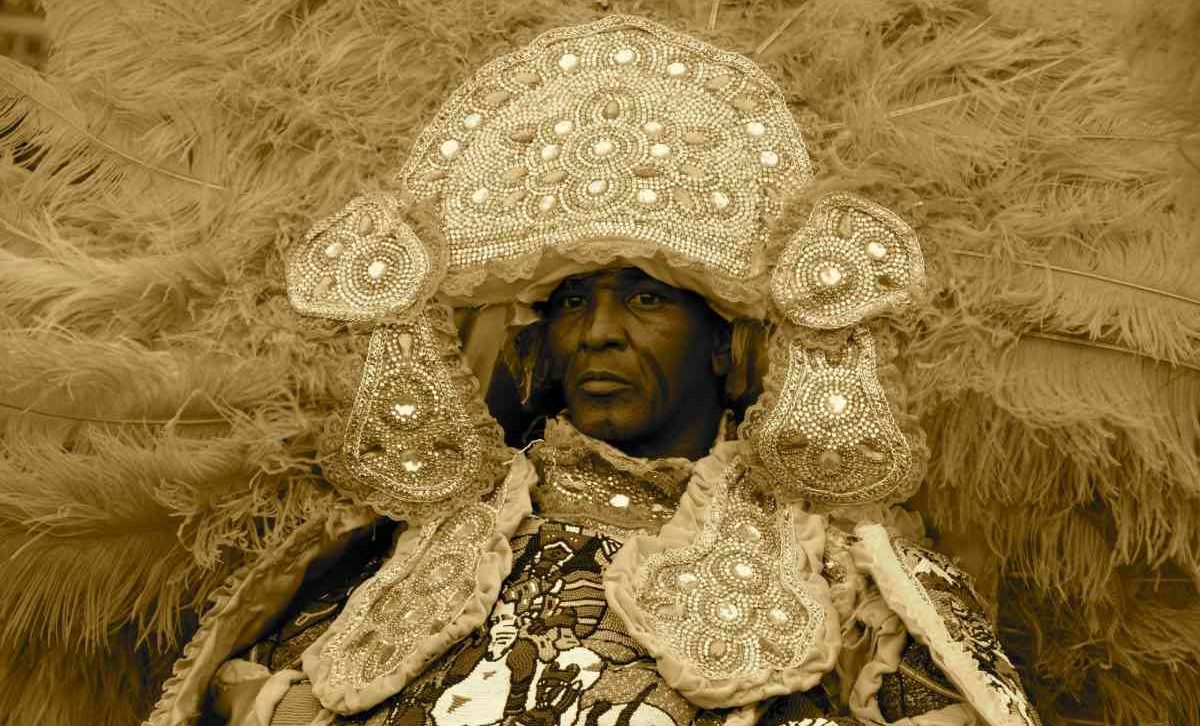
Traditional New Orleans festival attire
The Languages of Louisiana
Louisiana is a melting pot of cultures and communities, so it comes as no surprise that it is home to unique languages.
‘Louisiana French’ is an umbrella term for the dialects spoken by French Louisianians in southern Louisiana. Over centuries, Louisiana French has incorporated words that originated in African, Spanish, Native American, and English languages. This has given rise to linguistic features that are only found in Louisiana.
Another language found in this region is Louisiana Creole. Also known as ‘Kouri-Vini’, Louisiana Creole is a French-based language that developed on sugarcane plantations of the Mississippi Delta when those areas were French colonies. The language is indigenous to Louisiana and began as a pidgin with a vocabulary based on French. Pidgin languages are intentionally created by linguistic groups who do not share a common tongue but need a way of communicating with each other.
In some parts of Louisiana, French and Creole are spoken just as frequently as English.
The Cuisine of Louisiana and New Orleans
Louisiana is known for its Cajun, Creole, and Native American cuisine. Seafood is especially popular and abundant in Louisiana, both as an ingredient and as the main dish. You’ll find shrimp, crawfish, crabs, oysters, and catfish on almost every menu. Popular foods in Louisiana include gumbo, jambalaya, and po’boy, often followed by famous desserts such as beignets.
Cajun cuisine is one of the most popular cuisines in the United States. People in Southern Louisiana say that “others eat to live, while we live to eat”. For many years, crawfish were not eaten outside of Cajun Country, but today, boiled crawfish is served throughout the state.
Creole cuisine is shaped by traditional French cooking with Spanish, African, and Indian influences.
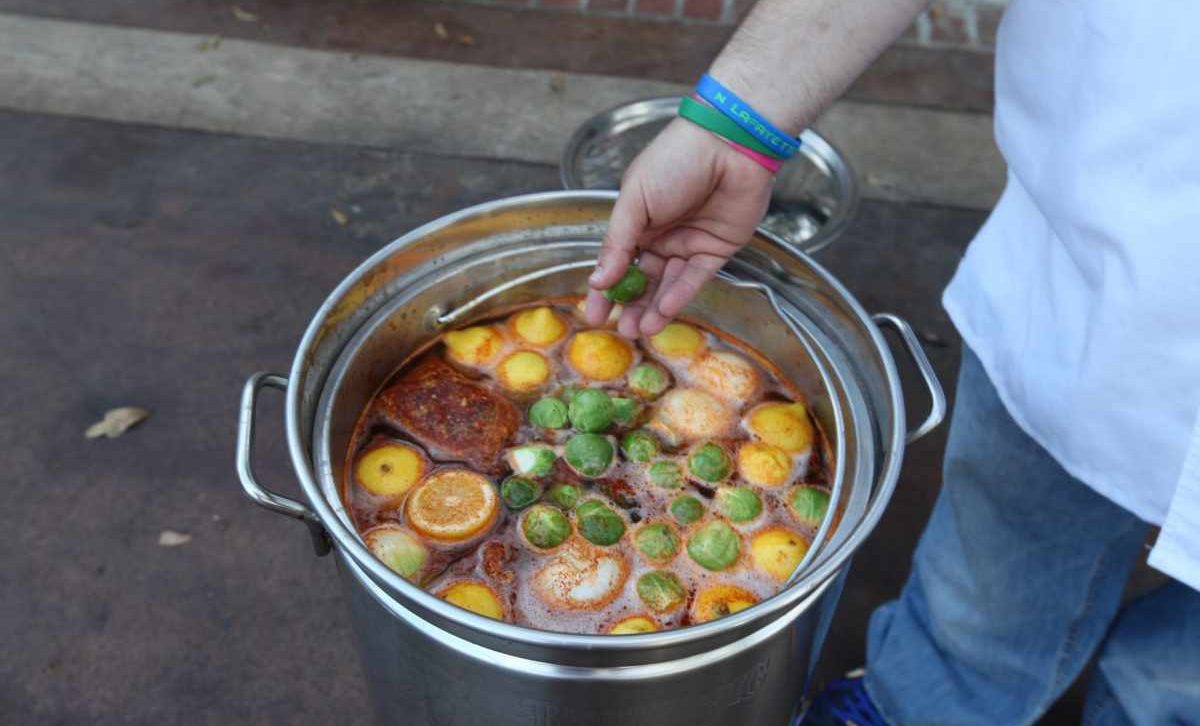
A traditional Louisiana seafood boil
Louisiana’s Nature
Louisiana has just as much to offer from its natural environment as its cultural one. The vast water networks made up of rivers, bayous, swamps, and shorelines are teeming with life. There are even plant and animal species that you won’t find anywhere else in the United States!
The American Alligator is one of the most iconic of Louisiana’s inhabitants. They are now commonplace, however they were almost wiped from existence many years ago. Another reptile to keep your eyes peeled for is the Alligator Snapping Turtle; the largest freshwater turtle in the country. Along with their cousins, the Common Snapping Turtle, they live in the bayou and use their killer bite to subdue their prey. Rainbow Snakes, Buttermilk Racers, Mud Snakes, Pit Vipers, and Kingsnakes are just a few of the serpentine residents of Louisiana. Although beautiful, many of these snakes are venomous, so it’s best to give them plenty of space if you see them on a hiking trail.
Not to be outdone, Louisiana has plenty of iconic mammals to offer too. The Louisiana Black Bear is native to the area and was endangered until 2016. Conservation efforts by environmental and biological scientists have helped the population return to sustainable numbers. Other mammalian inhabitants include Swamp Rabbits, Eastern Cottontails, and Fox Squirrels.
There are approximately 160 different species of birds that can be found within Louisiana. A lot of them inhabit the shorelines, where you’ll see species such as the Brown Pelican and the Great White Egret. Bald Eagles and Great Blue Herons nest along the coast and hunt in the calm waters of the bays and slow-moving waterways. Louisiana’s location and consistently warm temperatures mean that migratory birds often settle there for the winter to escape the cold climates of the north.
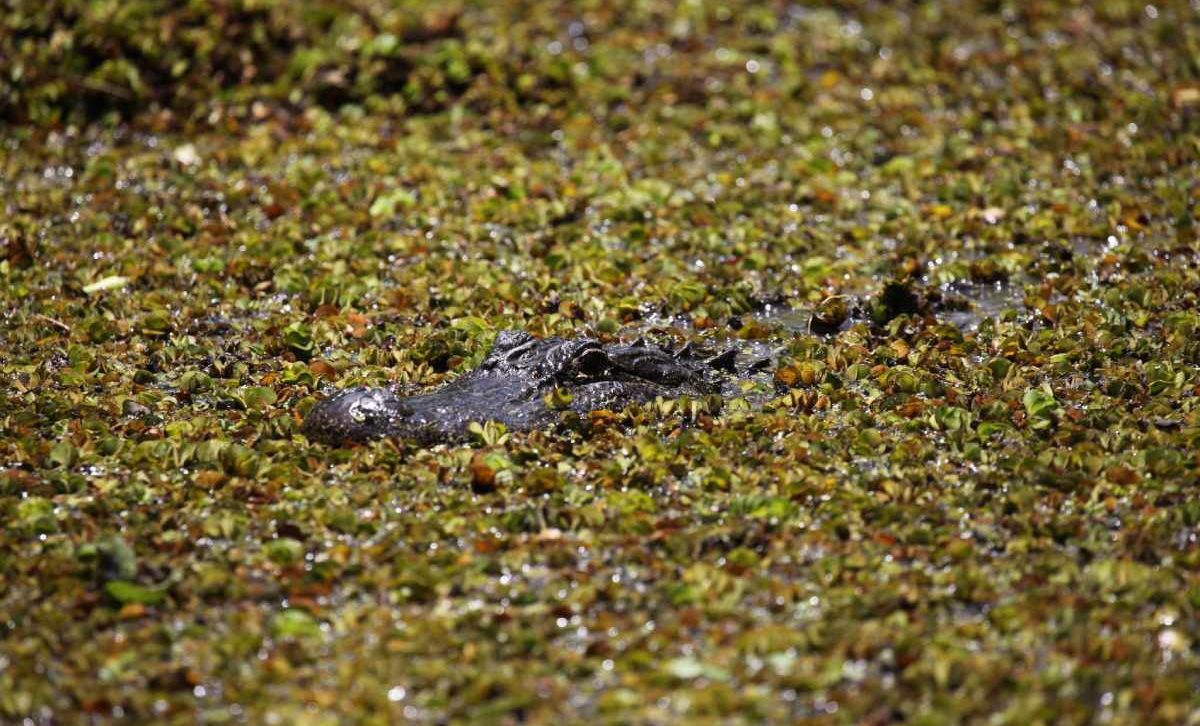
An American Alligator
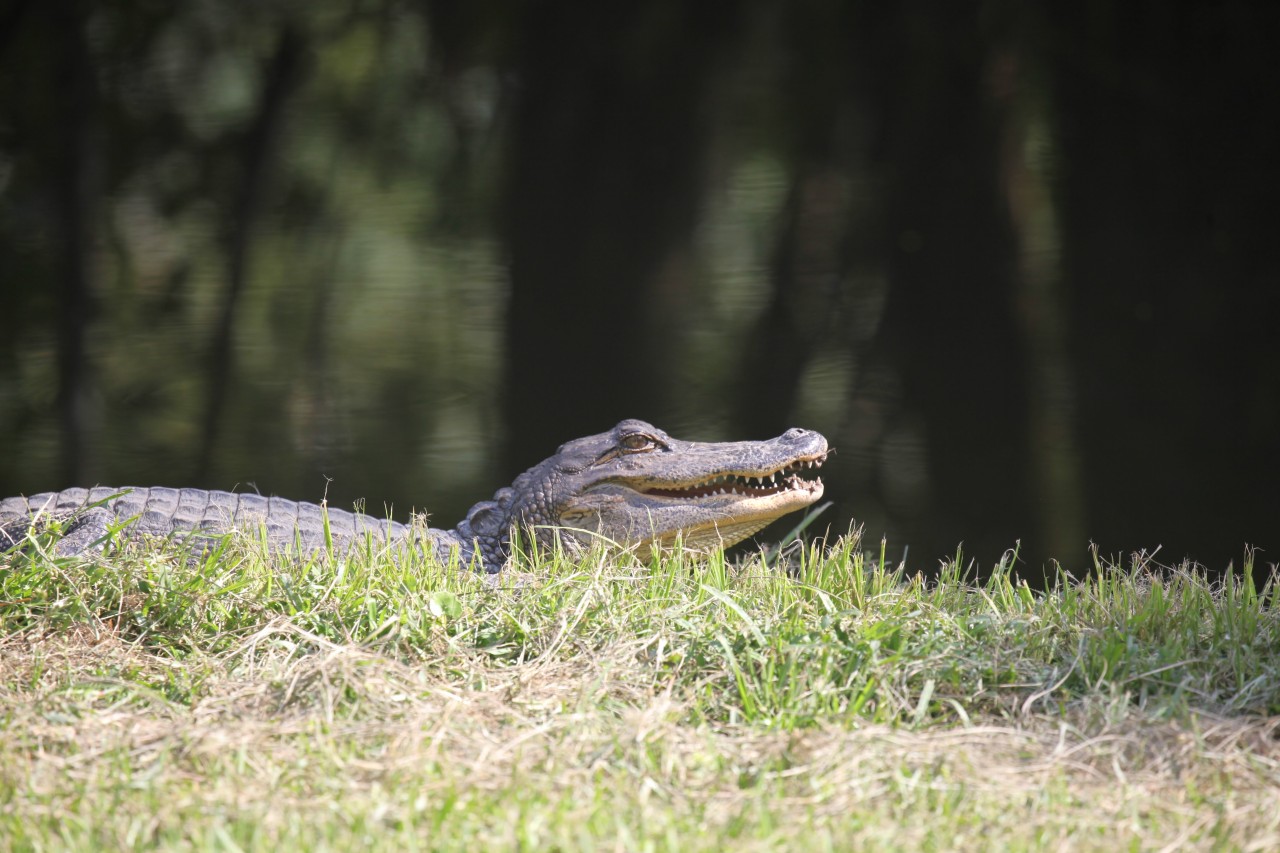 Explore the rich culture, history, and vibrant landscapes of the Deep South with Gondwana Ecotours’ Louisiana Country tour, featuring authentic Cajun cuisine, lively music, and unforgettable experiences in the heart of Louisiana.
Explore the rich culture, history, and vibrant landscapes of the Deep South with Gondwana Ecotours’ Louisiana Country tour, featuring authentic Cajun cuisine, lively music, and unforgettable experiences in the heart of Louisiana.Visiting Louisiana is often said to be like visiting another country. One of the best ways to explore this fascinating state is with a local guide who can show you unmissable sights and explain the deep history of the area. Our Louisiana: Gators and Gumbo Adventure is a fantastic way to explore Louisiana’s incredible culture and wildlife with a local guide!
Take a moment to read our travel journal and discover why Argentina is celebrated as one of the best countries to visit in South America! From its lively culture and breathtaking landscapes to the rich culinary scene and diverse experiences awaiting every traveler, you’ll find an abundance of inspiration to help you plan your next unforgettable adventure in this remarkable country.
Resources
- https://www.iexplore.com/articles/travel-guides/north-america/united-states/louisiana/history-and-culture
- https://www.twinkl.co.uk/teaching-wiki/louisiana
- https://louisianais.com/en/culture/louisiana-creole/2023/10/16/what-is-louisiana-creole/
- https://www.britannica.com/topic/Mardi-Gras-carnival#:~:text=Mardi%20Gras%2C%20festive%20day%20celebrated,preparation%20for%20fasting%20and%20abstinence.

